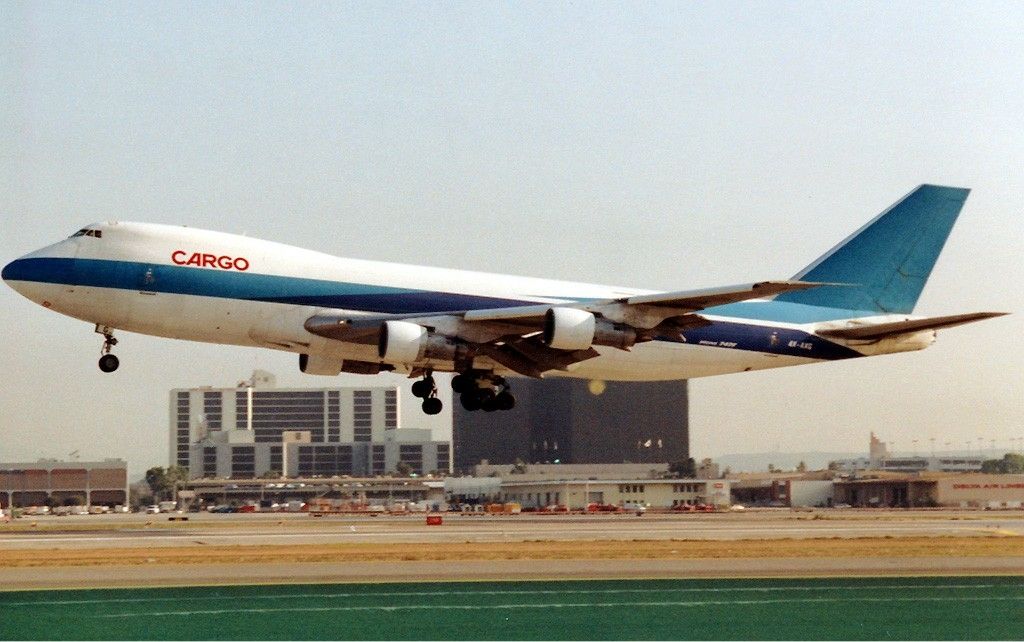It has been three decades since El Al flight 1862 crashed shortly after departing Amsterdam on October 4th, 1992. The accident saw a Boeing 747 freighter career into a block of flats after two engines fell off, causing considerable destruction on the ground. Let's take a look back to see how exactly the accident unfolded.
The flight and aircraft involved
El Al flight 1862 was a two-legged cargo flight that originated at New York JFK Airport. Following a stopover at Amsterdam Schiphol (AMS), its final destination was planned to be the Israeli flag carrier's hub at Tel Aviv Ben Gurion Airport (TLV).
The first leg of the flight was far from uneventful, with autopilot speed fluctuations reportedly occurring. Additionally, the crew are also said to have had to deal with radio issues, as well as fluctuating generator voltage levels on the aircraft's third engine. Nonetheless, the Aviation Safety Network notes that the flight landed safely in Amsterdam at 14:40 local time for its planned stopover in the capital.
While on the ground in Amsterdam, the flight had a crew change, while its cargo was processed and the aircraft was refueled. The plane in question was a Boeing 747-200F registered as 4X-AXG. According to ATDB.aero, the 13-year-old quadjet had served El Al for its entire career, since joining the Israeli flag carrier in March 1979.
Get the latest aviation news straight to your inbox: Sign up for our newsletters today!
Sudden engine separation
Despite being scheduled to depart at 17:30 local time, the flight didn't begin its taxi until 18:14. Seven minutes later, at 18:21, it took off from Schiphol's runway 01L. Today, this is a 3,300-meter-long asphalt strip with the headings 18C/36C known as the 'Zwanenburgbaan'). Just seven minutes later, disaster struck the jet.
Specifically, while the 747 was climbing through 6,500 feet at 18:28, its number three engine (and the corresponding pylon) separated from the aircraft's wing. As it fell out and backward, it also collided with the number four engine, causing this and its pylon to also detach from the jet. At this point, the crew declared an emergency and requested to return to Schiphol, although they believed the engines had only lost power, rather than completely detached. In any case, they never made it back.
The crew wanted to make an emergency landing on Schiphol's runway 27, but their aircraft had too much altitude to do so in the first instance. As such, they continued to circle over Amsterdam, but began to lose control of the 747. This was due to different flap configurations between its wings, caused by damage to the hydraulic system that was sustained when the number four engine broke off.
Love aviation history? Discover more of our stories here!
Catastrophic collision
Owing to this loss of control, the 747 eventually crashed into the intersection between two apartment blocks in Amsterdam's Bijlmermeer neighborhood at 18:35 local time. This led to the deaths of all four of its occupants (two pilots, a flight engineer, and an El Al employee traveling as a passenger), as well as 39 people on the ground. The latter of these was lower than an initial police estimate of 200.
The crash also resulted in 26 injuries, with 11 requiring hospital treatment. Investigators found that the fuse pins keeping the detached engine pylons in place were suffering from fatigue cracks due to overloading. This caused the number three engine to break off, which subsequently resulted in the detachment of engine four. The pylons' design and certification were also criticized from a safety perspective.
Sources: ATDB.aero, Aviation Safety Network



